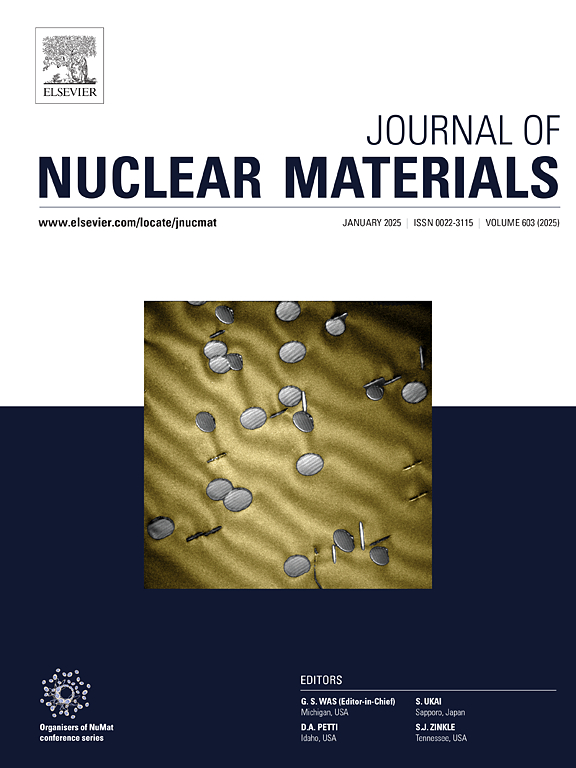The effect of nickel coatings on corrosion of nickel-chrome alloys in molten FLiBe determined using a phase-field model
IF 2.8
2区 工程技术
Q3 MATERIALS SCIENCE, MULTIDISCIPLINARY
引用次数: 0
Abstract
An existing phase-field model (Bhave et al. (2023) [19]) is applied to investigate why there is so much variation reported in the literature on the effectiveness of pure Ni coatings in reducing corrosion by molten salt. We simulate the impact of Ni diffusion barrier coatings on the corrosion of Ni-Cr alloys by molten FLiBe using 2D simulations. We first compare the corrosion behavior in a Ni-20Cr alloy exposed to molten FLiBe at 700 ∘C with and without a pure Ni coating. The coating reduces the mass loss after 1000 hours by a factor of ten, consistent with experimental results from the literature. The model is then used with Latin hypercube sampling involving 100 simulations with different coating thicknesses and average alloy and coating grain sizes. As the coating grain size increases, the model predicts that the mass loss and corrosion depth into the alloy decreases. This is due to a decrease in the number of fast diffusion paths along the coating grain boundaries (GBs) for the Cr to reach the salt. As the alloy grain size increases, the model predicts that the mass loss decreases but the corrosion depth increases. This is because larger grain size creates less GB area for Cr depletion, increasing mass loss, but less GB area also allows the Cr depletion to penetrate further into the alloy. In addition, the model predicts that as the coating thickness increases, the mass loss rapidly decreases and the impact of both grain sizes also decreases. Thus, controlling the coating grain size is less important with thicker coatings.

求助全文
约1分钟内获得全文
求助全文
来源期刊

Journal of Nuclear Materials
工程技术-材料科学:综合
CiteScore
5.70
自引率
25.80%
发文量
601
审稿时长
63 days
期刊介绍:
The Journal of Nuclear Materials publishes high quality papers in materials research for nuclear applications, primarily fission reactors, fusion reactors, and similar environments including radiation areas of charged particle accelerators. Both original research and critical review papers covering experimental, theoretical, and computational aspects of either fundamental or applied nature are welcome.
The breadth of the field is such that a wide range of processes and properties in the field of materials science and engineering is of interest to the readership, spanning atom-scale processes, microstructures, thermodynamics, mechanical properties, physical properties, and corrosion, for example.
Topics covered by JNM
Fission reactor materials, including fuels, cladding, core structures, pressure vessels, coolant interactions with materials, moderator and control components, fission product behavior.
Materials aspects of the entire fuel cycle.
Materials aspects of the actinides and their compounds.
Performance of nuclear waste materials; materials aspects of the immobilization of wastes.
Fusion reactor materials, including first walls, blankets, insulators and magnets.
Neutron and charged particle radiation effects in materials, including defects, transmutations, microstructures, phase changes and macroscopic properties.
Interaction of plasmas, ion beams, electron beams and electromagnetic radiation with materials relevant to nuclear systems.
 求助内容:
求助内容: 应助结果提醒方式:
应助结果提醒方式:


